Abstract
Factors affecting the extent to which individuals aged 65 and over living in inner-city households received health care for three chronic conditions (high blood pressure, heart trouble, arthritis) are examined. These factors are age, sex, living arrangements, and the presence of more than one chronic condition. Indicators of receiving care are having seen a health care provider within the previous six months and being on medication for the condition. A more detailed scrutiny of care received for high blood pressure is undertaken as well. This analysis is part of a larger study investigating health care of groups within East Baltimore who utilize different systems of care, focusing on a hospital outpatient department and a new HMO. Data were obtained from 1455 household interviews among three sample populations: enrolees in an HMO, public housing project residents, and the general community. The findings indicate that high proportions of the elderly who report having these conditions also report receiving care for them. For people with high blood pressure, the majority are receiving care and being given self-care instructions, and high proportions report compliance with instructions.
Full text
PDF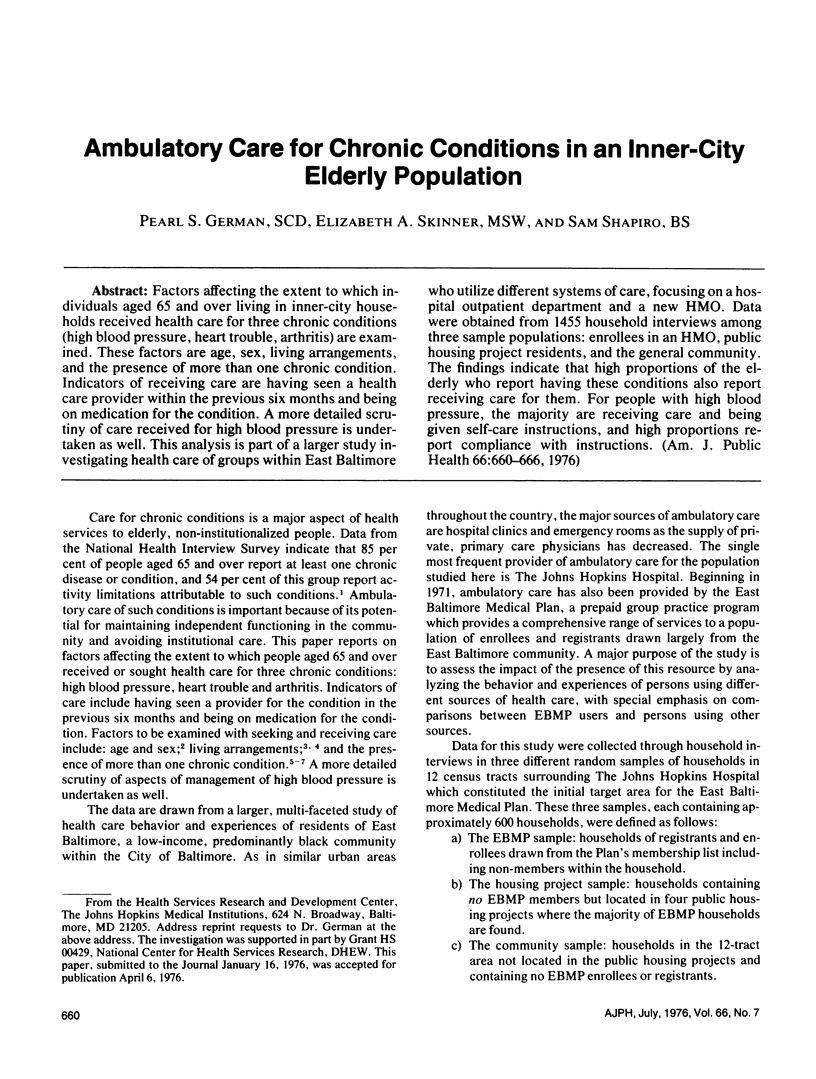
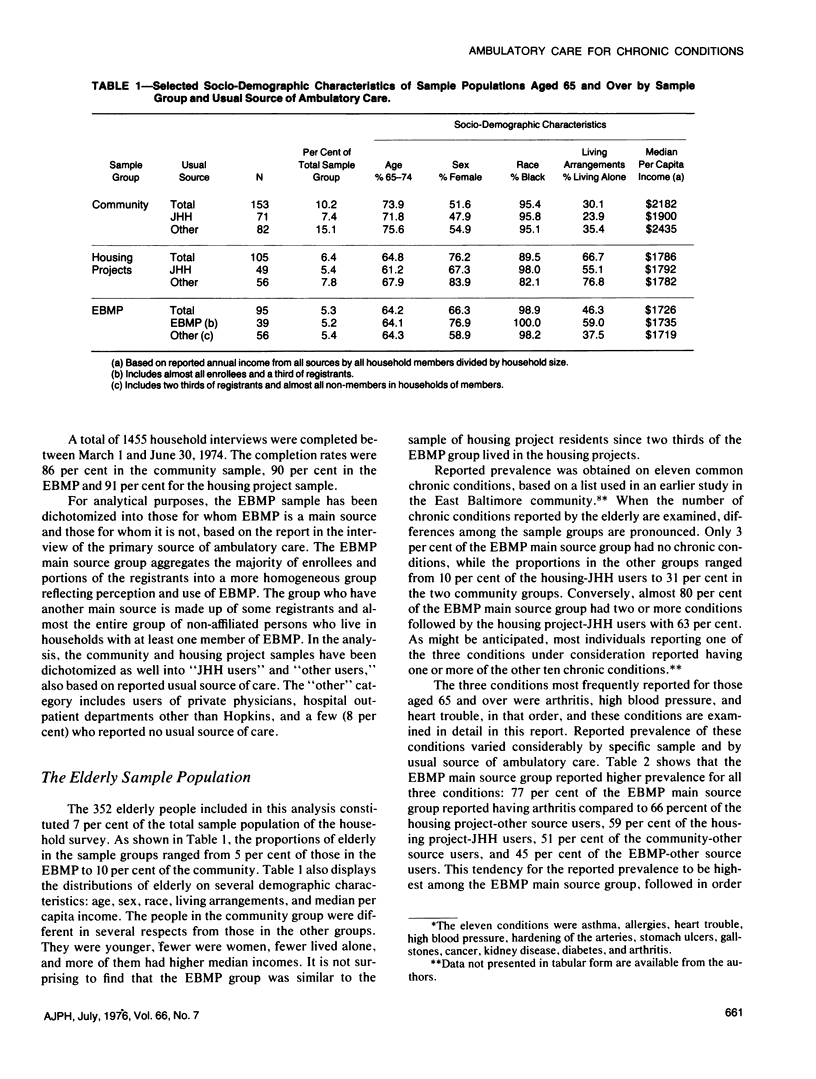
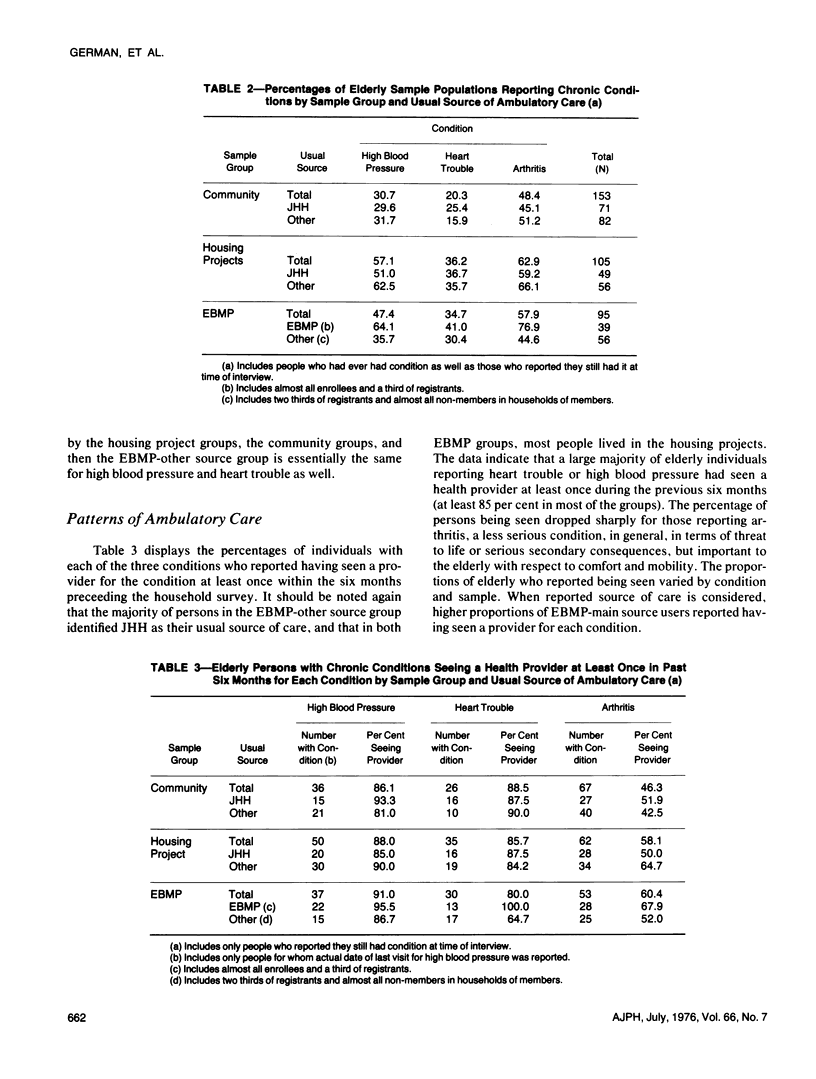
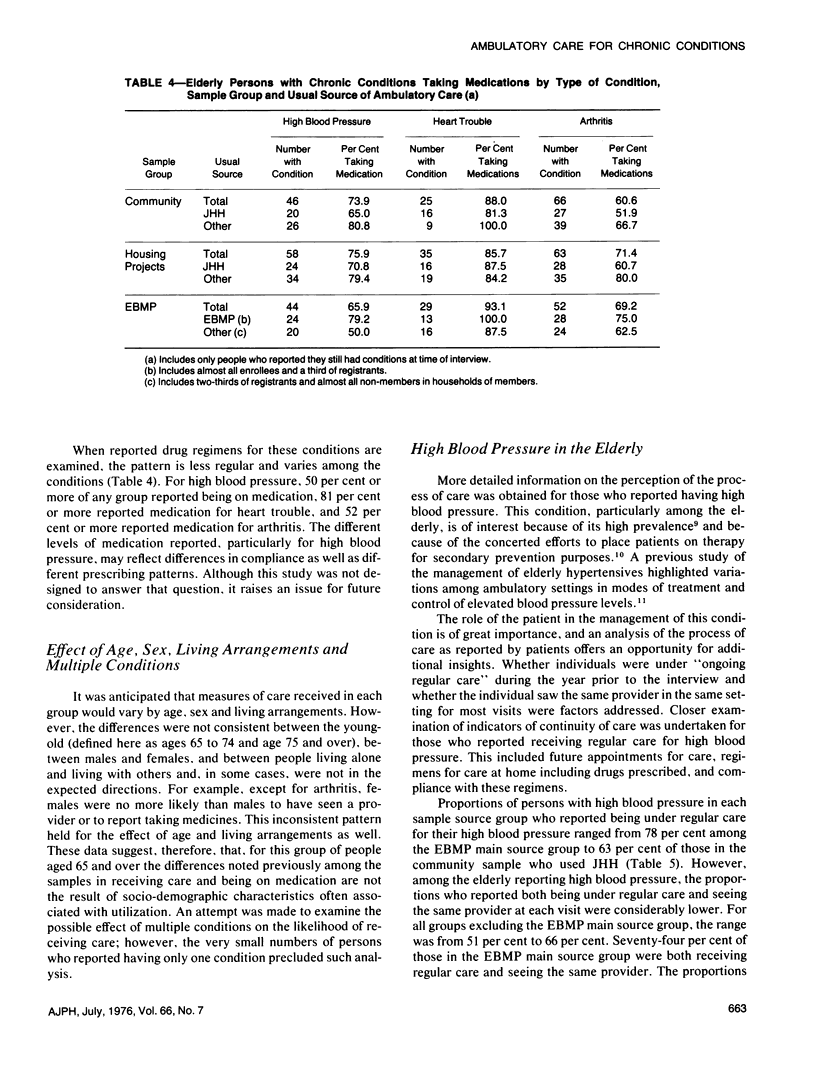
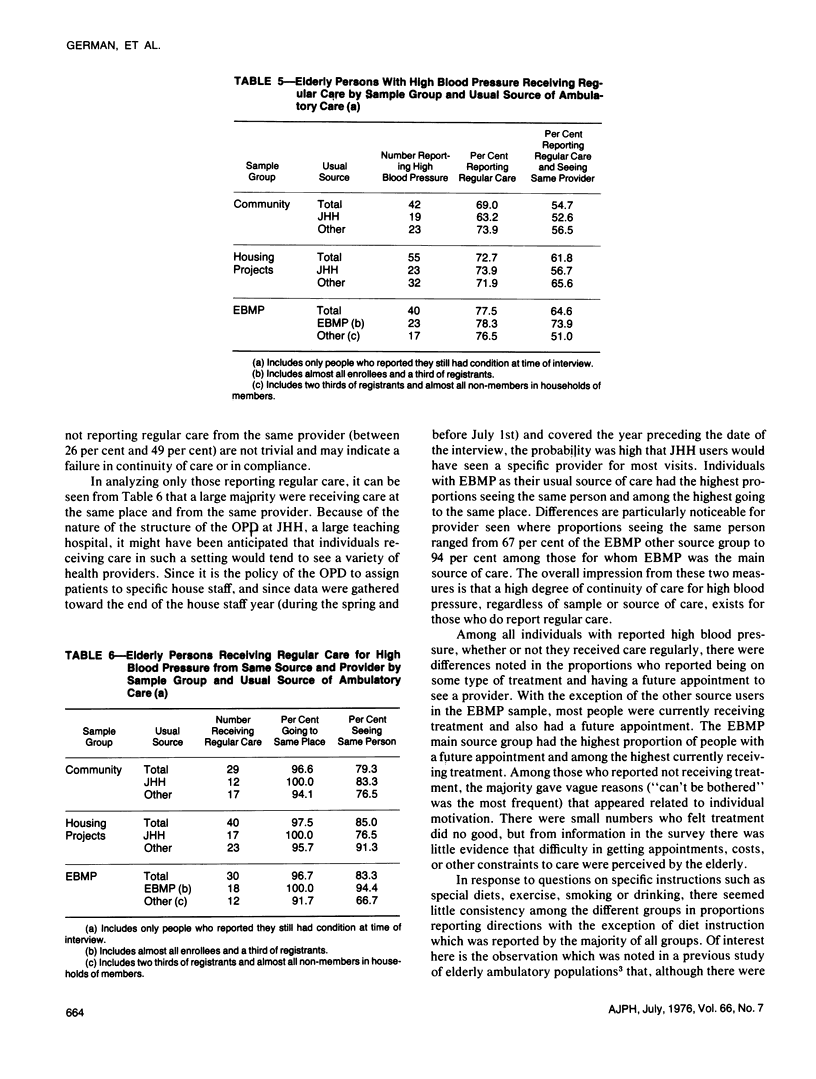
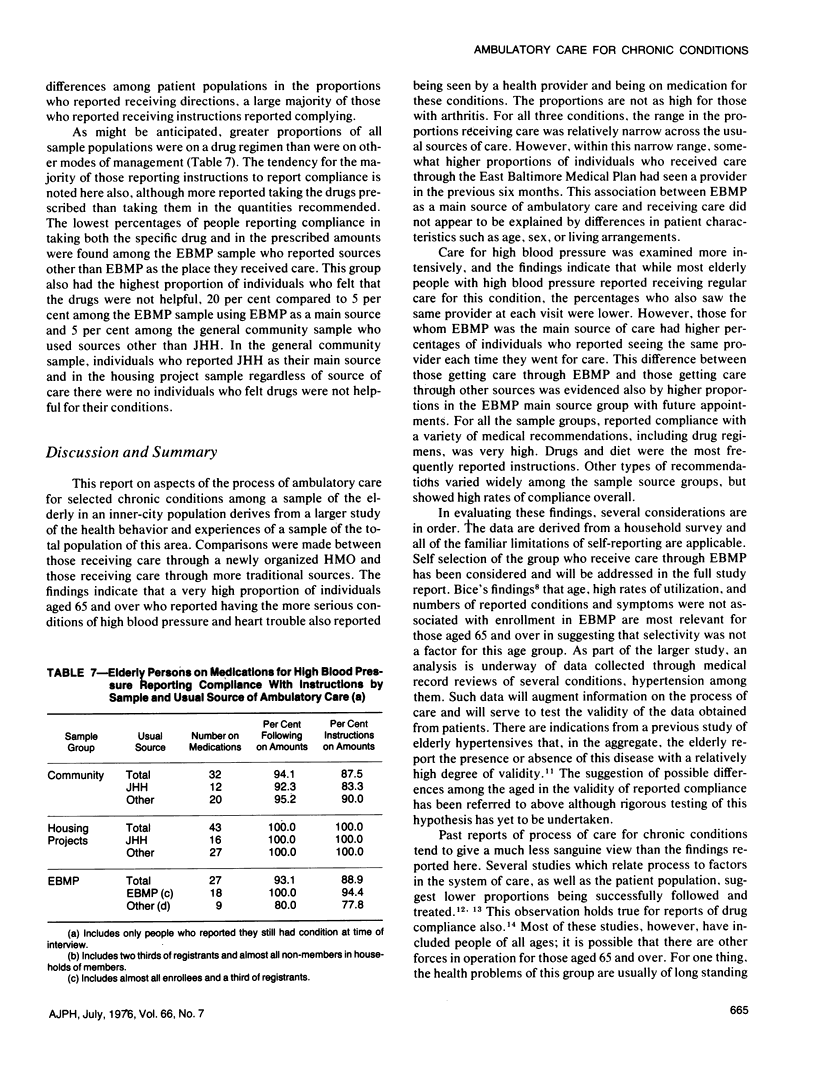
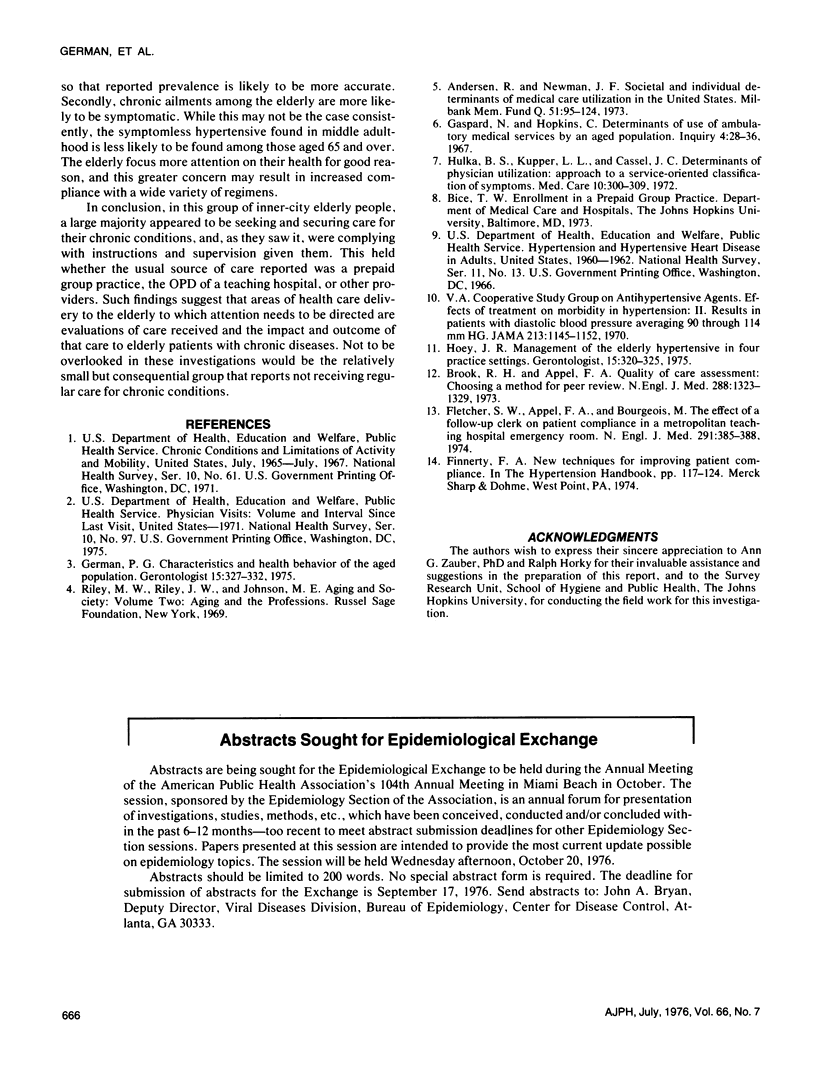
Selected References
These references are in PubMed. This may not be the complete list of references from this article.
- Andersen R., Newman J. F. Societal and individual determinants of medical care utilization in the United States. Milbank Mem Fund Q Health Soc. 1973 Winter;51(1):95–124. [PubMed] [Google Scholar]
- Brook R. H., Appel F. A. Quality-of-care assessment: choosing a method for peer review. N Engl J Med. 1973 Jun 21;288(25):1323–1329. doi: 10.1056/NEJM197306212882504. [DOI] [PubMed] [Google Scholar]
- Fletcher S. W., Appel F. A., Bourgois M. Improving emergency-room patient follow-up in a metropolitan teaching hospital. Effect of a follow-up check. N Engl J Med. 1974 Aug 22;291(8):385–388. doi: 10.1056/NEJM197408222910804. [DOI] [PubMed] [Google Scholar]
- German P. S. Characteristics and health behavior of the aged population. Gerontologist. 1975 Aug;15(4):327–332. doi: 10.1093/geront/15.4.327. [DOI] [PubMed] [Google Scholar]
- Hoey J. R. Management of the elderly hypertensive in four practice settings. Gerontologist. 1975 Aug;15(4):320–326. doi: 10.1093/geront/15.4.320. [DOI] [PubMed] [Google Scholar]
- Hulka B. S., Kupper L. L., Cassel J. C. Determinants of physician utilization: approach to a service-oriented classification of symptoms. Med Care. 1972 Jul-Aug;10(4):300–309. doi: 10.1097/00005650-197207000-00003. [DOI] [PubMed] [Google Scholar]


